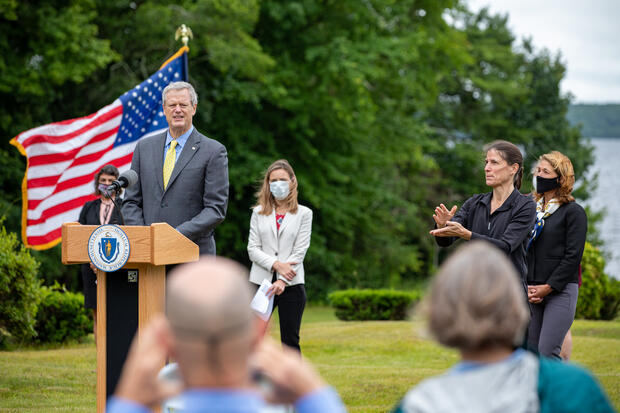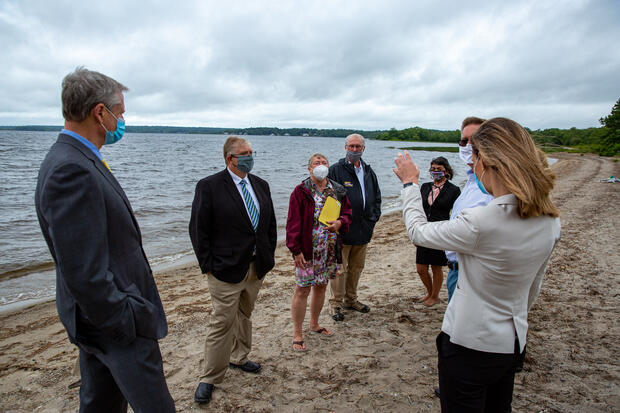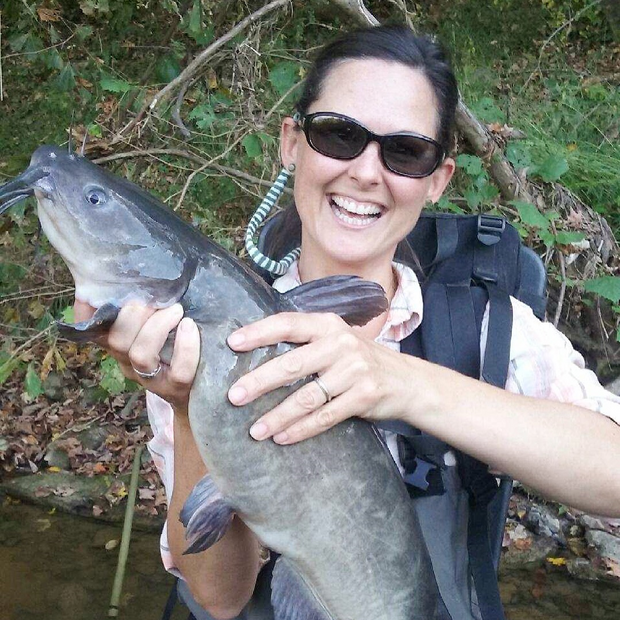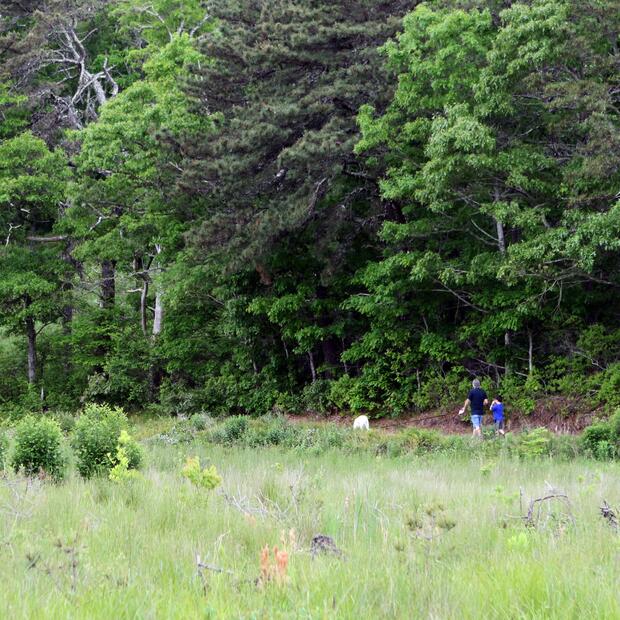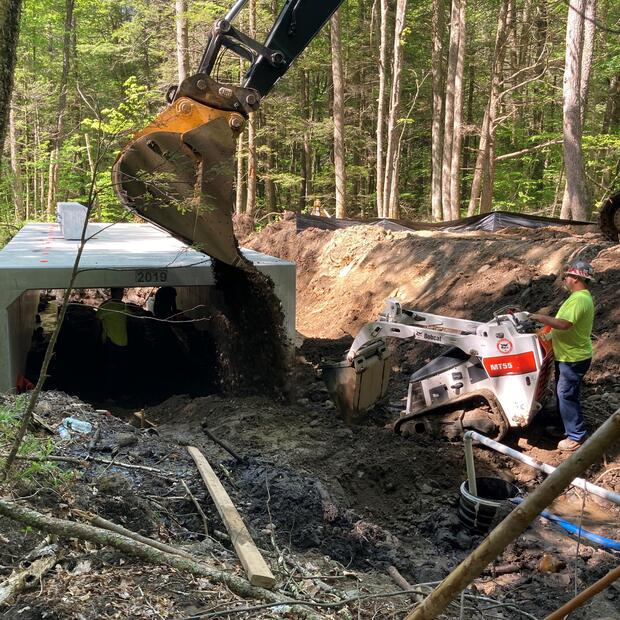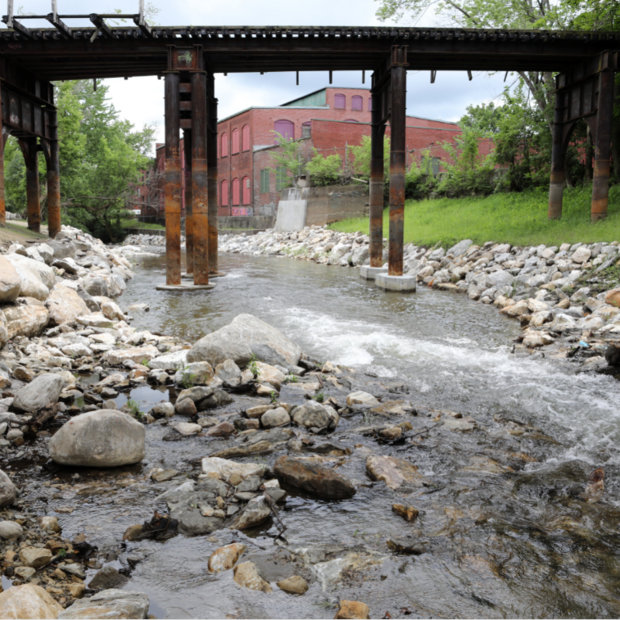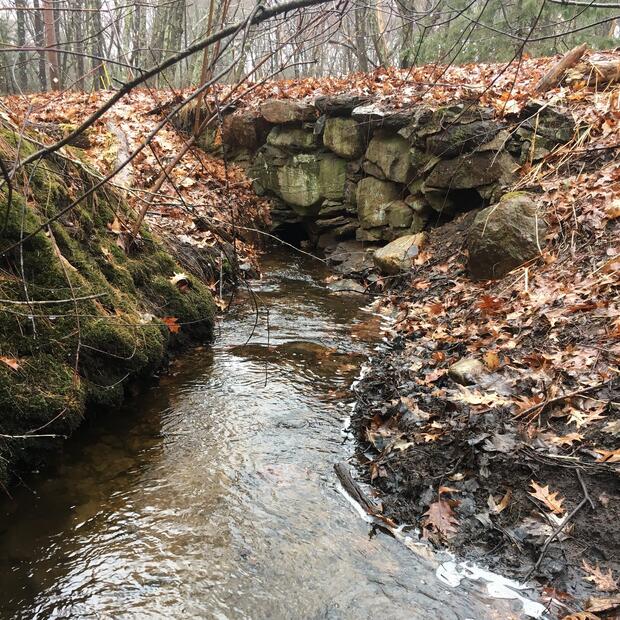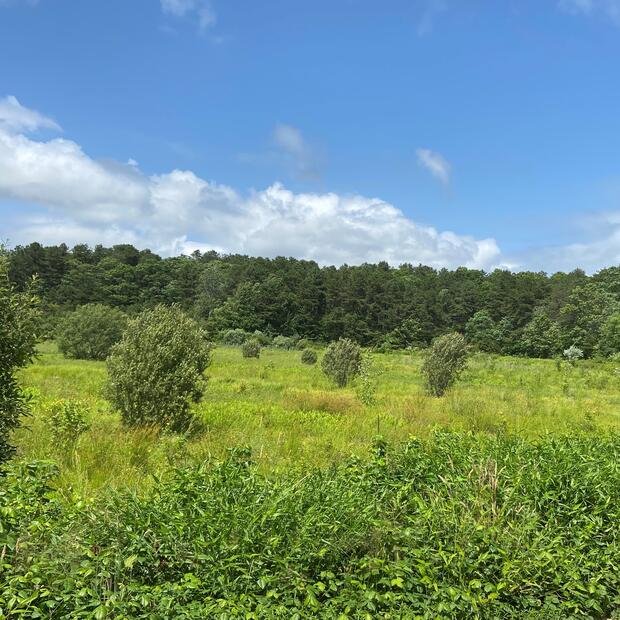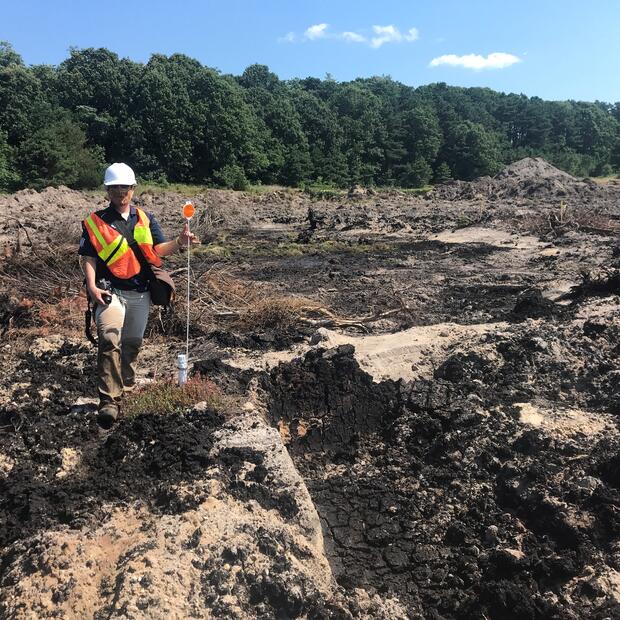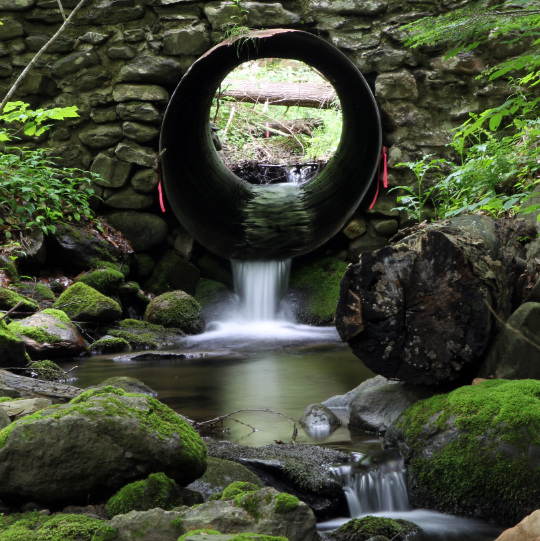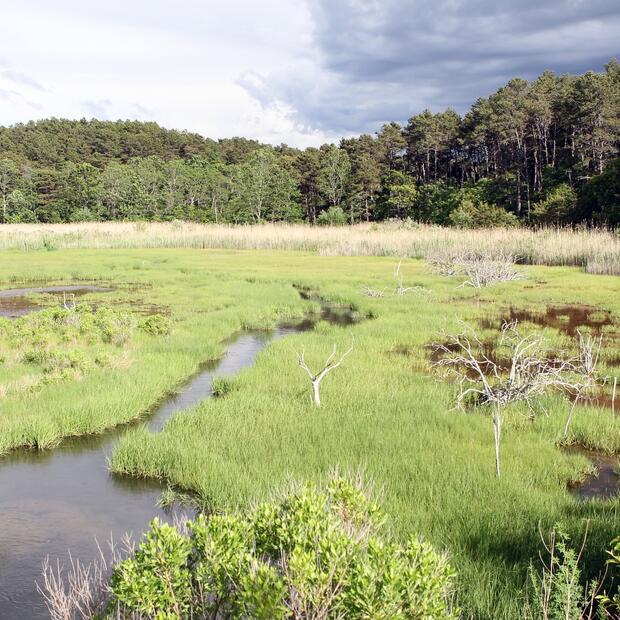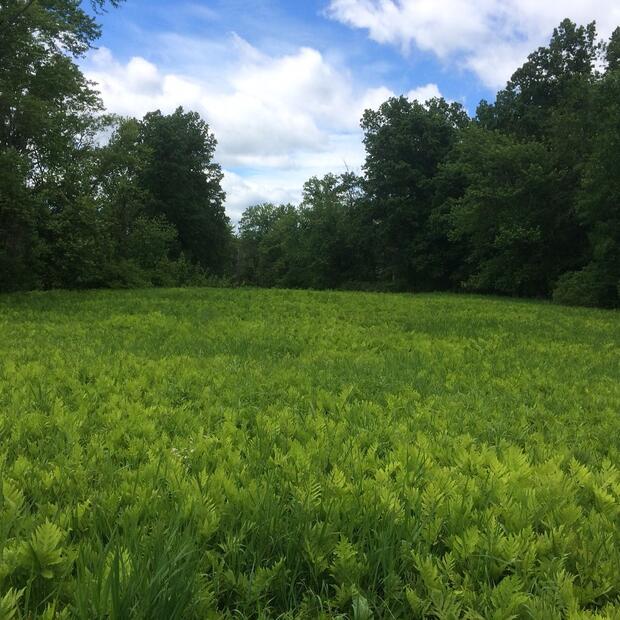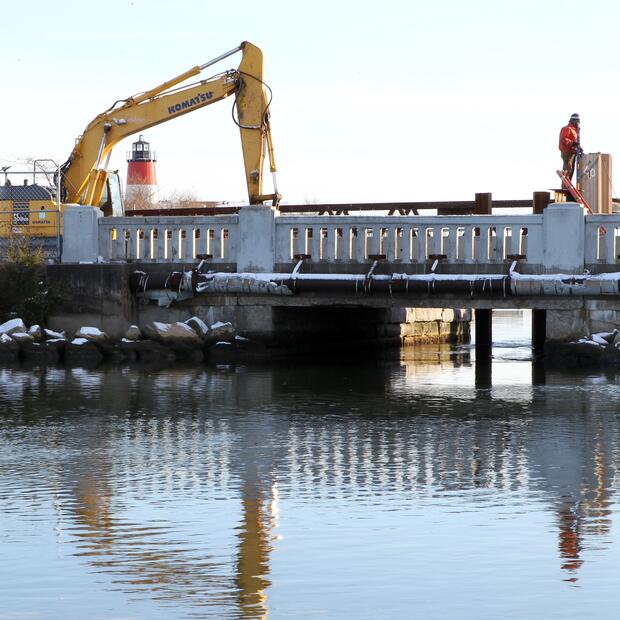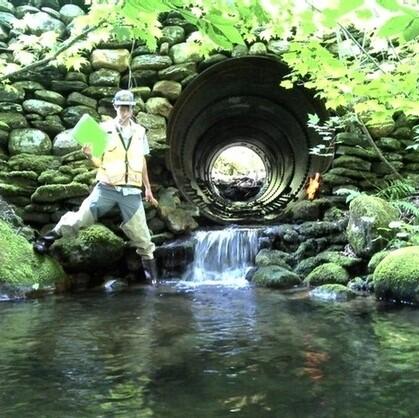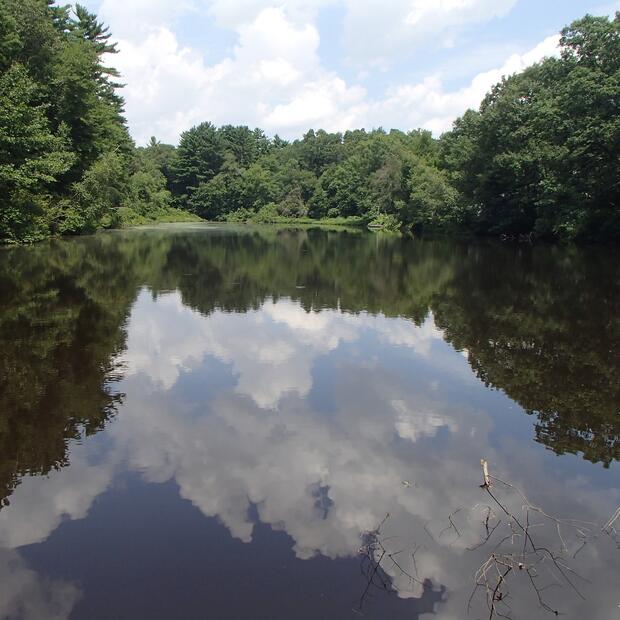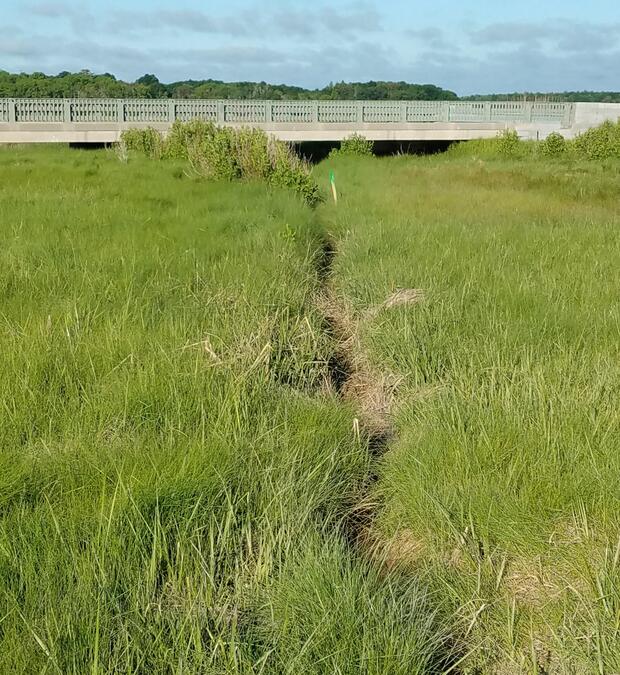Letter from the Director
Dear Friends and Colleagues,
The Division of Ecological Restoration (DER) restores rivers, wetlands, and watersheds for the benefit of people and the environment. Our projects improve public safety and help people and nature adapt to climate change. Restoration creates jobs, too, with 12.5 jobs created or maintained for every $1 million invested in restoration projects. Demand for restoration assistance continues to grow across the Commonwealth, even during the last six months of the pandemic.
In this Ebb & Flow, we share updates on river and wetland restoration projects that recently began or will soon begin construction. Many of our restoration projects result in new open space or improved trails, where residents of the Commonwealth can witness the resilience of nature for themselves. Watching a river or wetland recover from past damage brings hope and optimism. Spending time in nature brings solace. This is more important to us now than ever before.
I’ll see you on the river,
Beth Lambert, Director
Governor Charlie Baker Highlights Restoration and Climate Adaptation at Assawompset Pond Complex
On Friday, July 17th, Governor Charlie Baker, Lieutenant Governor Karyn Polito, Energy and Environmental Affairs Secretary Kathleen Theoharides, Department of Fish and Game Commissioner Ron Amidon, DER staff, project partners, and other state and local officials gathered to celebrate locally-driven advances in flood mitigation and ecological restoration in the Assawompset Pond Complex (APC). The speaking program highlighted efforts led by a state, regional, and local partnership to reduce future flooding, improve public safety, increase resilience to climate change, and restore habitat for fish and wildlife. The group also gathered to tour relevant project sites and discuss the importance of this initiative. Governor Baker remarked that “The Assawompsett Pond region is a critical natural resource for Southeastern Massachusetts, offering valuable habitat, drinking water and outdoor recreational opportunities to residents. Climate change is expected to worsen flooding issues in this area, and this state and local partnership will ensure the region is prepared for climate change while protecting public safety and wildlife habitat.”
The APC includes Assawompset Pond, which is the largest natural freshwater lake in Massachusetts and serves as an important regional resource for water supply, recreation, and natural resources, as well as the headwaters of the Nemasket River. Flooding has been a frequent issue in this area and has caused evacuations, property damage, failures of septic systems, and interruption of critical utility and road infrastructure. Climate change is expected to make flooding worse in the APC and a comprehensive plan is needed to alleviate flooding issues.
In December 2019, DER awarded $100,000 to the Southeastern Regional Planning & Economic Development District (SRPEDD) to design a floodwater management plan for the region, incorporating green infrastructure and nature-based solutions to flooding. As part of this effort, DER and SRPEDD worked together to build a team of technical experts from state and non-governmental organizations and a committee of municipal and other stakeholders to identify and prioritize potential flood mitigation actions in the Pond Complex and Nemasket River. This group studied and prioritized the most promising methods for improving the ecological functions of the APC in order to alleviate floodwater impacts. Some of the priority solutions that came out of this work were engineered infrastructure projects (such as replacing undersized culverts), while others are nature-based solutions that enhance the ability of natural systems to do their own important work in storing and diverting floodwater (such as wetland restoration). The project team selected the top six priority projects and mapped out the process for implementation. Moving forward, the project team is now securing funding to carry out the priority projects, all of which will build community resilience to climate change, improve public safety, and restore habitat for fish and wildlife.
Welcome to New Staff
DER is excited to welcome several new staff members to our team!
Sequoya Bua-lam:
Sequoya joined us as the DER's Streamflow Restoration Summer Intern, helping to monitor streamflow and water quality throughout Massachusetts. Sequoya has a BA in Geology with minor in Ecology and has previously completed internships with the Virginia Institute of Marine Science Eastern Shore Lab, USGS Virginia Water Science Center, Keck Geology Consortium, and the West Virginia Rural Water Association. She is currently working on her Master’s degree at UMass Boston. We’re sorry to see her go, as she’ll be moving on to an EPA ORISE fellowship. Good luck Sequoya!
Bernadette DeBlander:
Bernadette joins DER as the Ecological Restoration Grants Manager, managing DER’s statewide Culvert Replacement Municipal Assistance Grants Program, which provides funding for Massachusetts municipalities interested in replacing undersized, perched and/or degraded culverts located in areas of high ecological value. She comes with a wealth of knowledge on site development and stormwater management design, watershed assessment/planning, project management, and engineering and has experience working in both state and local Massachusetts government, private consulting, and a non-profit organization.
Krista Haas:
Krista joins DER as our new Ecological Restoration Communications Specialist. She has experience in environmental communications, education, and outreach through positions with New York Sea Grant and the NOAA Marine Debris Program and is a marine biologist by training. She is excited to join the passionate DER team and help tell the world all about the great work that is being done!
Jenny Sanders:
Jenny has been working in freshwater conservation for over a decade, with experience in nonprofit administration, ecological restoration project management, and watershed planning. Jenny joins DER as the Ecological Restoration Partnerships Specialist and will be working to increase the capacity of DER’s regional partners to expand restoration efforts that align with DER priorities.
Recent Restoration Work
Thanks to the extraordinary efforts of our restoration partners and our staff, DER's restoration projects made great progress over the last six months. COVID-19 challenges notwithstanding, six river and wetland Priority Projects began or completed construction, and six more will begin construction shortly. All of these projects take place in partnership with municipalities, landowners, not-for-profit organizations, and agencies. DER's restoration projects have many benefits to both people and the environment, including creating or maintaining 12.5 jobs for every $1 million spent on restoration.
We appreciate the commitment of all our partners to bring these projects to fruition, even under the challenges of COVID-19. Below is a brief overview of each of these efforts.
Recently Completed:
Coonamessett River Restoration
DER worked with the Town of Falmouth to complete the second phase of the Coonamessett River Restoration Project. This work, when combined with the first phase that was completed in 2019, resulted in the removal of the first dam from the ocean along the Coonamessett River, restored the river channel and former cranberry bog to a naturalized wetland and river complex, removed a valley-spanning dike, and replaced an undersized culvert with one that is more appropriate to the setting. Overall, more than 55 acres were restored and over two miles of upstream river were re-connected. This completed restoration site serves as the southern gateway to the Coonamessett Greenway Heritage Trail and is available for enjoyment by the public.
Kinne Brook Restoration
DER and partners replaced an undersized and failing culvert with a larger, safer structure that allows full upstream and downstream movement of aquatic species and reduces the risk of road damage and failure in flood conditions. As a high-quality coldwater tributary to the Middle Branch, a major tributary of the Westfield River, this work also benefits trout and other coldwater-dependent species in a 10-mile-long reach of Kinne Brook. This project was completed in June 2020. (image credit: Erin Rodgers, Trout Unlimited)
West Branch of the Housatonic River Restoration
DER, the City of Pittsfield, and other partners removed the obsolete and hazardous Tel-Electric (or Mill Street) Dam, located on the West Branch of the Housatonic River. The removal of this dam has strengthened community resilience to the impacts of climate change, restored natural river processes, and improved the ecological health of the river. Construction for the project was completed in June 2020 and we look forward to seeing the lasting positive effects.
Under Construction:
Boxford Culvert Replacement
DER is working with the town of Boxford through the Culvert Training Initiative to replace an undersized and degraded culvert with a structure that meets current design standards. This culvert replacement improves passage for fish and wildlife, reduces flood risk, and improves stream habitat and connectivity within a tributary of the Parker River. Construction staging has begun, with completion planned for later this year.
Childs River Restoration
DER is working with the Falmouth Rod & Gun Club and numerous other partners to restore stream connectivity and healthy wetlands within the Childs River watershed. Restoration actions will include removing small dams, dredging impounded sediment and agricultural fill, reconnecting floodplains, re-constructing stream channels, and planting native wetland species. Two small former cranberry farms will also be converted back into natural wetlands. The project is expected to benefit a variety of species by aiding fish and wildlife passage and by re-creating coldwater fish habitat to foster the return of species such as brook trout. Construction on this project has just begun.
Foothills Preserve and West Beaver Dam Brook Restoration
DER is working with multiple landowners and numerous partners on the final phase of the Tidmarsh Farms Restoration Project, which has helped to transition approximately 600-acres of retired cranberry farmland and associated uplands into restored wetlands and protected public open space. As part of this final phase, wetland and stream restoration is now in progress in approximately 50 acres of former cranberry farmland. Current work involves the removal of several dams, construction of trails and stream crossings, reconstruction of over one mile of stream channel, and significant earthwork. Additional funding from the USDA Natural Resources Conservation Service (NRCS) and U.S. Fish and Wildlife Service, engineering from Inter-Fluve, Inc., construction contracting from Luciano’s Excavation, Inc., and real time data collection from UMass Amherst have made this effort possible. Work is expected to be complete by spring 2021.
Nearing Construction:
Baptist Corner Road Culvert Replacement
DER is working with the Town of Ashfield through the Culvert Training Initiative to replace an undersized, perched, and degraded culvert with a structure that meets current design standards. Replacing this old culvert will improve stream habitat and reduce public safety risk. This project is scheduled to enter construction in the Spring of 2021 with funds from the Municipal Vulnerability Preparedness Program.
Eagle Neck Creek Restoration
Eagle Neck Creek is a 16-acre degraded tidal marsh that flows into Pamet Harbor and Cape Cod Bay, with two obstructions to its natural tidal flushing and flow. DER is working with the Town of Truro to remove these tidal restrictions in order to restore salt marsh functions, which will benefit associated shellfish, finfish, and other coastal wildlife. This includes reconstructing a culvert, which will both restore upstream tidal flow and address degradation of existing infrastructure at that road crossing. This project is near the end of the permitting phase.
Manhan Meadows Restoration Project
DER and MassAudubon are restoring a floodplain forest within 15-acres of former agricultural fields within MassAudubon's Arcadia Wildlife Sanctuary. This work will restore biodiversity and floodplain functions while serving as a model for future floodplain restoration opportunities in the Connecticut River Valley and elsewhere. Construction for this project is anticipated to begin this fall.
Parkers River & Seine Pond Restoration
DER, the Town of Yarmouth, and state and federal partners are replacing the undersized Parkers River Bridge on Route 28 to create a larger opening to improve tidal flows, water quality, fish passage, and ecosystem health. Replacing the 18-foot original bridge with a 30-foot replacement will especially improve water quality in Seine Pond, as well as restore almost 220 acres. The first phase of this project was completed in Spring 2020. Construction for the second and final phase of this project will begin in Fall 2020, after being put on hold for the summer months to accommodate Cape Cod traffic management and protect migrating fish populations.
River Road Culvert Replacement
DER is working with the Town of Windsor to replace an undersized and deteriorated culvert on a tributary to the East Branch of the Westfield River with a larger, safer structure that meets road‐stream crossing standards. The upper Westfield River and its tributaries provide some of the best coldwater and riverine fish communities in the Commonwealth and the new culvert will enable fish and wildlife to access these high‐quality habitats, as well as enhancing public safety, storm resiliency, and general ecological conditions. Construction for this project will be starting this fall.
Third Herring Brook Restoration
DER and partners are addressing a series of dams and culverts that impair the ecological function of Third Herring Brook, a tidal estuary on the South Shore of Massachusetts, and its tributaries. One such dam, Peterson Pond Dam, is currently the first dam from the North River on Third Herring Brook and is set to be removed. The Mill Pond Dam and Tack Factory Dam, the only other dams on the brook downstream of Peterson’s Pond Dam, were removed by this partner group in 2014 and 2016, respectively. The removal of Peterson Pond Dam will open 1.3 miles of instream habitat for fish, allow for future passage upstream, and improve water quality and river health. Funding is now in place for this effort and construction will begin this fall.
DER has more than 50 active river and wetland restoration projects in planning. For more information, see the Division’s interactive project map.
Project highlight: Great Marsh Restoration Project
DER is working with the Trustees of Reservations and multiple stakeholders to restore degraded marsh within the Great Marsh Area of Critical Environmental Concern. This project is working to address the legacy effects of ditching and other agricultural activities in salt marshes by investigating innovative methods for restoring saltmarsh habitat in the face of sea level rise.
The project partners have worked to implement nature-based methods designed to accelerate the natural healing of historic human-made ditches across our salt marshes. These ditches are a common and persistent feature found across New England, many of which were installed hundreds of years ago. Unfortunately, the marsh's ability to self-heal has been remarkably slow and recent research has identified these ditches as stressors with the potential to alter the way water moves throughout the marsh, otherwise known as its hydrology. The persistent presence of pools that don’t follow the natural pool formation and recession that goes with the tidal cycle is considered an indicator that our marshes are suffering from the chronic presence of these ditch and hydrologic alterations. These pools may even grow larger over time, converting marsh plain (especially high marsh) into unnatural and unvegetated “megapools.”
To address these issues and restore degraded marsh within the Great Marsh saltmarsh, project partners have focused on nature-based methods as an alternative to plugging ditches with inorganic fill, a method that has shown to be ineffective. One such nature-based solution that has been the focus of this project was pioneered by researchers at Parker River Wildlife Refuge, Rachel Carson Wildlife Refuge, and the University of New Hampshire. It is an innovative technique that seeks to use native, on-site, and natural materials to enhance the natural processes that hopefully accelerate healing and stable peat development. This method involves mowing the area adjacent to the targeted ditch and then rolling the mown material into the ditch. Once secured with a few stakes and twine, the material will act as a biodegradable net designed to naturally trap sediment, gradually filling in the ditch. In as little as one year, initial research has demonstrated elevations raised sufficiently to encourage natural re-growth of native marsh vegetation, an important step in healing for the marsh.
You can see this ditch remediation work in action via this video taken in June at Old Town Hill in the Great Marsh. This was the location of a past culvert replacement and by now addressing these ditches and thus managing their impacts, progress can be made toward the goal of restoring the marsh plain. This work will not only be important for improving the health of the ecosystem, but also for increasing resilience to climate change and sea level rise.
